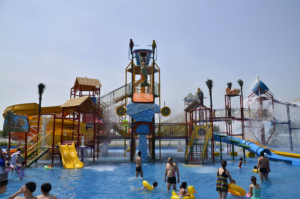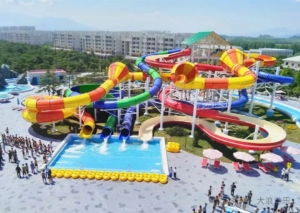Building a successful water attraction starts long before the first splash. Choosing the right Water Park Equipment is only the beginning—proper installation ensures safety, longevity, and customer satisfaction. Whether you’re installing a massive water slide, interactive play structures, or modular splash pads, following proven practices helps operators avoid costly mistakes. In this guide, we’ll walk you through how to install water park equipment step by step, highlight best practices, outline safety standards, and share maintenance tips to protect your investment.
How to Install Water Park Equipment Step by Step
Installing water park equipment requires careful planning, coordination, and compliance with industry standards. Here’s a simplified process operators and contractors can follow:
Site Assessment and Preparation
Conduct soil testing and drainage checks.
Ensure the ground can support heavy water play structures.
Plan for plumbing and electrical systems in advance.
Foundation and Utilities Setup
Build reinforced concrete foundations for slides, pools, and towers.
Install underground water supply lines, pumps, and filtration systems.
Prepare safe electrical connections for lighting and interactive features.
Delivery and Equipment Inspection
Inspect all delivered components for damage.
Match inventory against supplier specifications.
Store parts in a secure, dry location before assembly.
Assembly and Installation
Follow the manufacturer’s instructions for connecting slide sections, ladders, and platforms.
Use cranes and professional rigging tools for large equipment.
Secure bolts, joints, and anchors according to structural load requirements.
Testing and Commissioning
Run water pressure tests on pumps and filtration systems.
Conduct dry runs and full wet testing before opening to the public.
Address leaks, alignment issues, or structural concerns.
Staff Training and Safety Checks
Train operators on daily equipment checks.
Provide staff with manuals for emergency shutdowns and inspections.
By following these steps, operators can ensure that their water park equipment installation is both efficient and compliant.

Best Practices for Water Park Slide Installation
Water slides are often the centerpiece of any park. To guarantee a smooth and safe ride:
Follow precise alignment – Misaligned slide joints can cause safety hazards and reduce lifespan.
Use corrosion-resistant materials – Stainless steel hardware and fiberglass slides extend durability.
Seal joints properly – Prevent water leakage and surface cracks by applying manufacturer-approved sealants.
Plan for guest flow – Position slides for efficient queue management and maximum fun.
Schedule professional inspections – Certified engineers should check the structure before launch.
Adopting these best practices reduces downtime, minimizes maintenance costs, and ensures that water slide installation delivers long-term value.
What Safety Standards Apply to Water Park Equipment Installation?
Safety is the top priority in every water park project. Equipment installation must follow both international and local regulations:
EN 1069 & ASTM F2376 – Standards governing the design and installation of water slides.
NSF/ANSI 50 – Guidelines for filtration and recirculation systems in aquatic facilities.
OSHA and local building codes – Worker safety and site compliance during installation.
Manufacturer guidelines – Always follow certified instructions provided by equipment suppliers.
Complying with these safety standards not only protects guests but also shields operators from liability risks. Highlighting compliance during procurement also reassures buyers when evaluating water park equipment suppliers.

Maintenance Tips for Newly Installed Water Park Equipment
Proper maintenance is essential once installation is complete. Here are some best practices:
Daily inspections – Check for loose bolts, cracks, and water leaks.
Surface cleaning – Use non-abrasive cleaners to preserve slide surfaces and play structures.
Pump and filtration checks – Regularly inspect water circulation systems to prevent downtime.
Seasonal overhauls – Before peak season, conduct comprehensive safety and mechanical inspections.
Record-keeping – Maintain logs of all maintenance activities for compliance and audits.
By prioritizing maintenance, operators can extend the life of their water park equipment and maintain a safe, enjoyable guest experience.
Conclusion
Installing Water Park Equipment correctly is the cornerstone of building a safe, profitable, and exciting aquatic attraction. From site preparation to slide installation, adherence to safety standards and ongoing maintenance ensures smooth operations. Whether you’re an investor, resort owner, or amusement park operator, taking the time to plan and execute installation the right way will pay off with higher guest satisfaction and long-term ROI.
FAQs
Q1: Can I install water park equipment without professional help?
Small splash pads may be simple, but large water slides and structures require certified engineers and professional contractors.
Q2: How do I choose the right supplier for water park equipment?
Look for a reputable company like Guangdong Dalang Water Park Equipment Co., Ltd., with a strong track record, safety certifications, and comprehensive after-sales service.
Q3: How often should water park equipment be inspected after installation?
Daily inspections are essential, with seasonal comprehensive checks before peak use.




